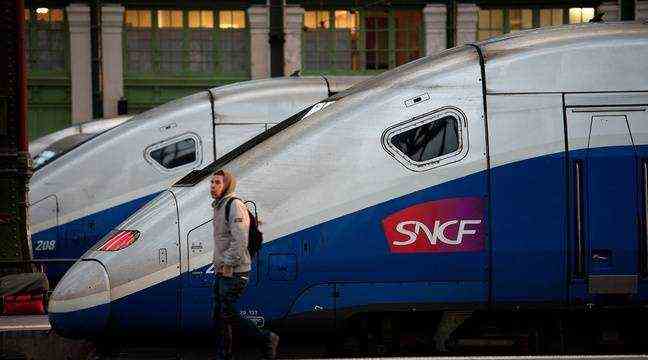TGVs to Gare de Lyon in Paris. – A. GELEBART / 20 MINUTES
The SNCF said on Friday that it was applying “with the greatest rigor” the health instructions after the publication by Mediapart of data of a report from the Labor Inspectorate suggesting “itinerant clusters”.
According to this report, commissioned by the SUD union, the CO2 levels, an indicator of renewal and air quality, on May 12 in a Lyon-Montpellier TGV, reached 1,380 parts per million (ppm) with a peak at more of 4,000 after the arrival of many travelers in Valencia. It is well beyond, notes Mediapart, the limit of 800 ppm recommended by the High Council of Public Health (HCSP) in enclosed spaces open to the public.
“The recirculated air undergoes permanent treatment”
The rail operator underlines for his part that the recommendations of the HCSP do not concern rail transport, where the regulations set the level at 5,000 ppm “under all operating conditions”. And, still defends the SNCF, “TGV equipment is designed to maintain a level of CO2 between 1,000 and 1,500 ppm”, with an outside air supply “continuous and equivalent to 20 m3 of fresh air per hour and per traveler ”.
In addition, says the operator, “the recycled air constantly undergoes mechanical, hygrometric and thermal treatment which makes it possible to reduce the rate of viral particles diffused by aerosolization”.
The SNCF “applies with the greatest rigor all the instructions and rules of the health authorities, in terms of ventilation or filtration of the air on board trains, as it enforces the obligation to wear a mask,” he said. -she insured.
TGVs not equipped with high performance filters
Mediapart notes for its part the fact that TGVs, unlike airplanes, are not equipped with high performance filters (HEPA).
Without these, “TGVs are contaminants,” says Bruno Andreotti, professor at the École normale supérieure (ENS), a specialist in the physics of virus dispersion and ventilation, quoted by the online media.
The Minister Delegate for Transport Jean-Baptiste Djebbari wanted to be reassuring. “The figures that we have, for more than a year and a half now, show that public transport (…) are not priority places of propagation”, he indicated on CNews.
“This is a subject that we have taken very seriously, we are currently carrying out studies with the French Atomic Energy Commission, which has very fine modeling capabilities, the idea is to always progress if necessary. let’s learn things during these investigations, ”he added, however.

